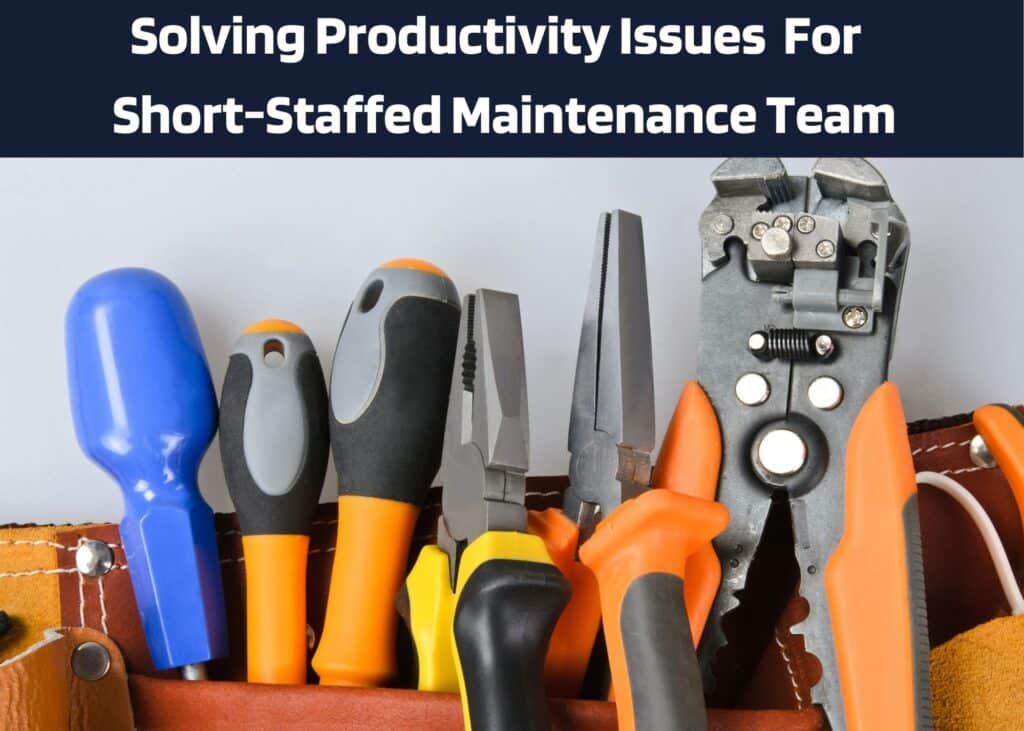
Being understaffed is one of the most difficult issues employers are facing today. As we covered in our recent article, “Why is Hiring Hard Right Now,” industries across the United States are struggling to find suitable hires. The multifamily industry is no different, especially when it comes to maintenance teams.
When you’re understaffed, your team members are scrambling around to make sure that all of the tasks are being taken care of. Oftentimes, this includes completing tasks that may not be in your employees’ job descriptions. Not only does this take their focus away from what they were hired to do, but it can also result in quick burnout. This ultimately causes dips in their performance and poor productivity.
Some common warning signs are stress, missed deadlines, and a decline in quality of work. If you’re seeing some of these behaviors from your staff, then it’s likely that your team is in need of some serious changes.
Solutions to Increase Maintenance Productivity While Short-Staffed
We understand that it’s hard to predict when your team may be short staffed. The pandemic is a perfect example of how life can blindside you in the most unexpected ways. But, it does happen. Though we are in unique times, being understaffed has always been an issue, especially for maintenance teams. From vacations to sicknesses to the unexpected letter of resignation and difficulty finding a replacement, most businesses have felt the sting of being understaffed. Here are some solutions for increasing productivity during these challenging times:
- Revise Your Priorities
When you’re short-staffed, not everything is going to get done. Sitting down and evaluating the tasks at hand can help you distinguish which tasks need to be done versus which ones can be done later. This works especially well when you review your tasks regularly. It will help give your team a clearer picture of where your priorities lie, allowing you to adjust your expectations as necessary.
- Communication and Team Development
Communication should be a top priority when your team is picking up the slack. Make sure everyone understands how appreciated they are, and encourage open communication. Talk it out when there’s an issue, and allow your team members to give some input. Working together is one of the most effective ways to keep morale and productivity up, especially when it’s positive and encouraging.
- Encourage Breaks
When your team is understaffed and employees are trying to keep up, they tend to forget to take care of themselves. Encouraging everyone to take their breaks throughout the day can help avoid the imminent burn out of an overworked team. Everyone needs a mental break and a moment to refresh from time to time, especially in high-stress moments.
Implementing these practices can assist you in making sure your employees are happier and more productive. At this point though, you may be asking yourself how you can best track productivity, especially for your maintenance team? Let’s explore some ideas.
Tracking Maintenance Productivity
Creating and implementing tools to help you track your maintenance productivity may be just what your team has been needing. Developing systematic ways to track your long-term maintenance productivity will help you to stay on track for reaching your business goals. Starting by documenting maintenance actions will help generate the information needed to determine your key performance indicators. This will allow you to reflect on which areas need the most improvement and lead you towards your long-term goals.
KPIs
Key Performance Indicators (KPI) help by measuring your team’s performance against key objectives. Some of the KPIs that should be implemented when it comes to multifamily maintenance are:
- Planned Maintenance Percentage or PMP
A current PMP is essential for tracking the time spent by maintenance staff on anticipated services versus unforeseen issues. The best way to determine this is by measuring the total maintenance hours, then learning which hours were actually spent on scheduled maintenance items.
- Response Time
Creating a KPI for response time will help you set your own expectations, as well as setting goals for the team. When you notice a downward trend it is a clear indicator of declining productivity, allowing you to quickly address the issue. In a similar matrix you can track how long a repair takes, offering helpful data for creating your PMPs.
- Maintenance Backlog
While it’s not bad to have a maintenance backlog, monitoring how long it takes to complete the tasks given is important. How long it takes your maintenance team members to get through their “to do” list can help determine the productivity of your team. If it normally takes 2 weeks to complete everything but you’re noticing a 4 week trend, you can once again address and correct the issue quickly.
Being Understaffed Is Temporary
Though periods of being understaffed are tough, the good news is they are temporary. You can use these periods to truly bring your team together. It is also a great time to see where the struggles in your processes are so you can address them. Practicing tracking and implementing productivity practices will give you the strength to weather any storm. I mean… we made it through the pandemic, didn’t we?
Feeling the pains of being understaffed? Hire Priority might be the solution you’ve been looking for. With our pre-screening processes and training, we can help your company find it’s next long-term hire


